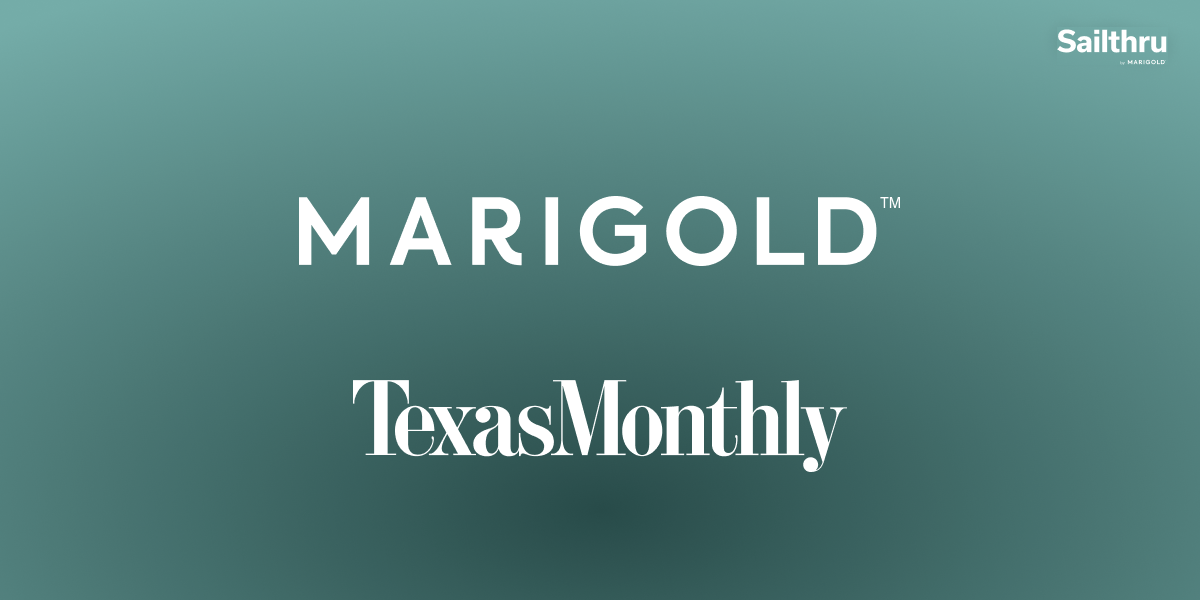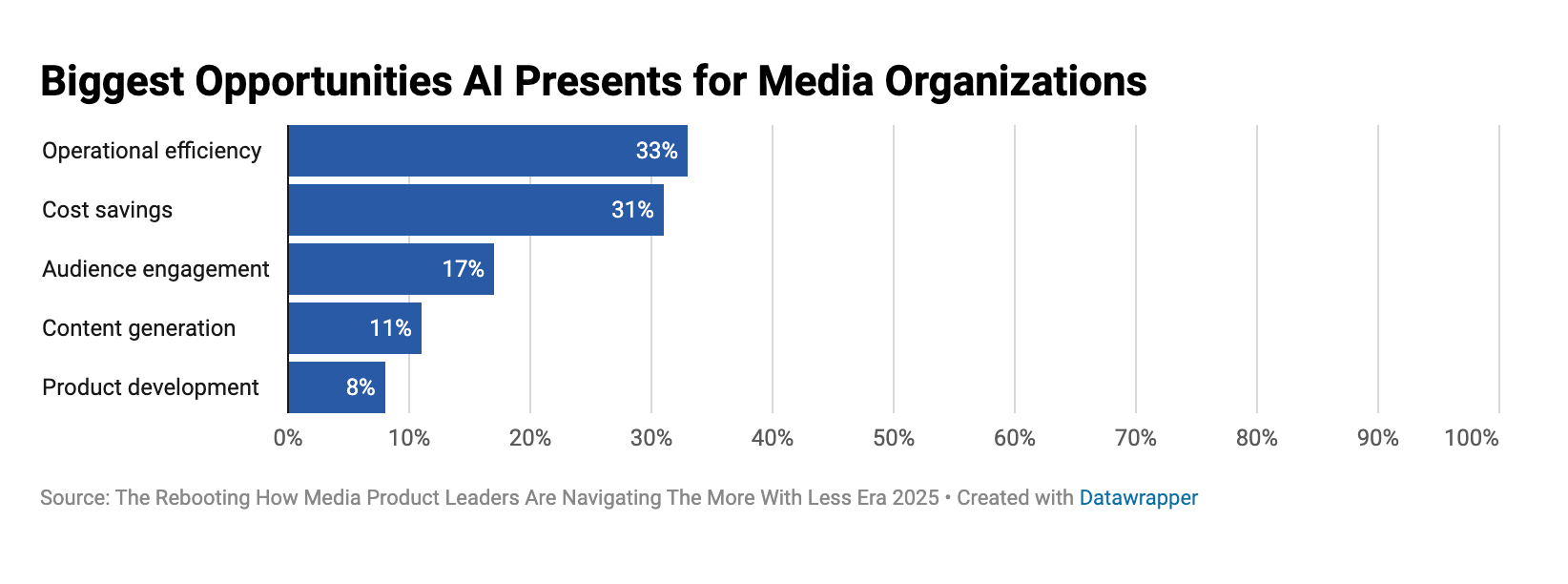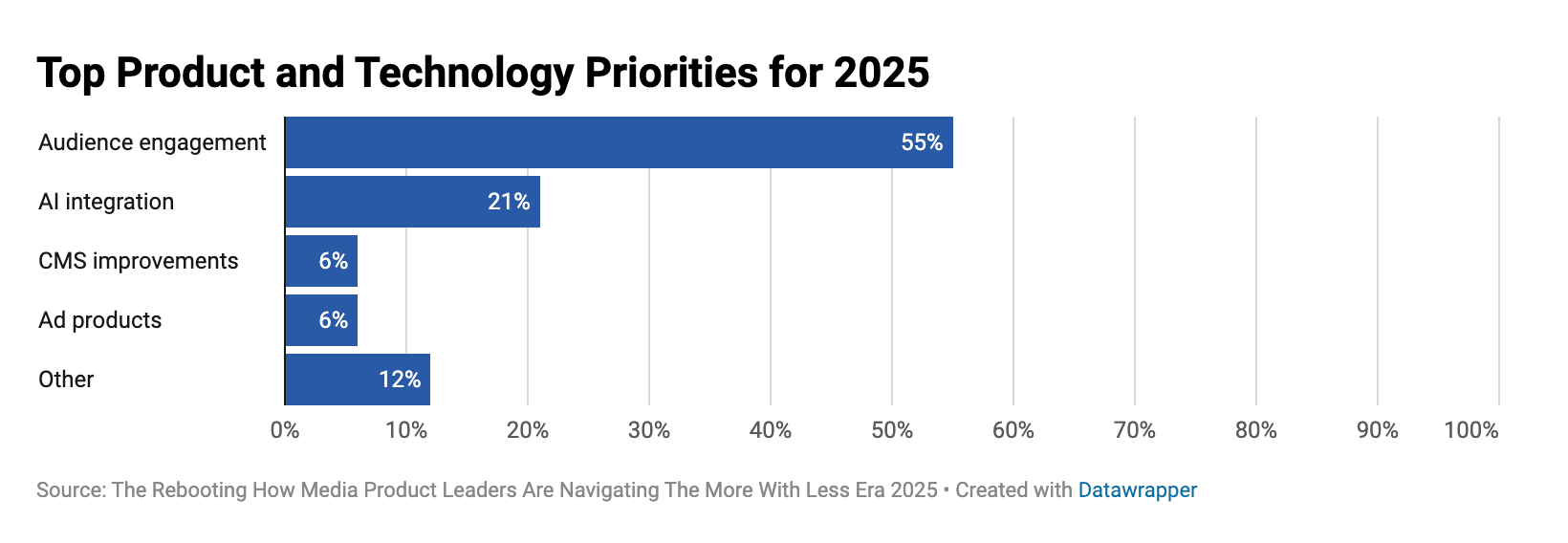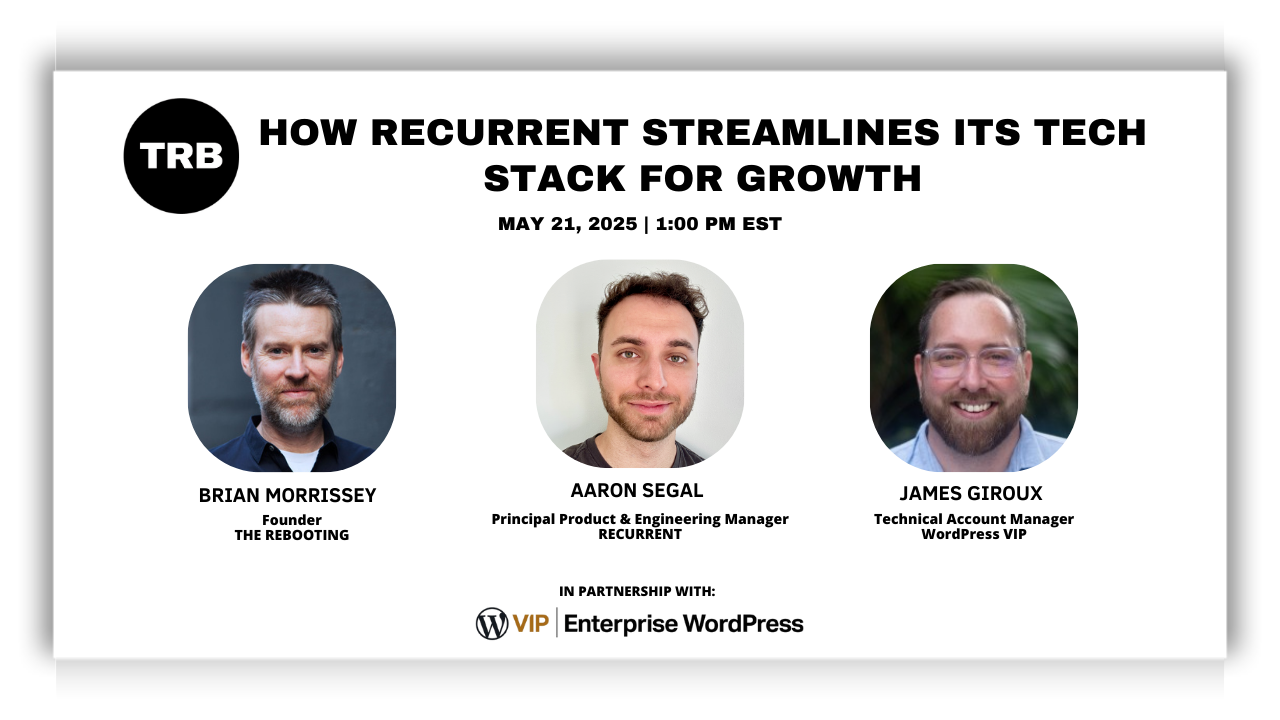Anonymous Banker of the state of media M&A
"Odds are your business will be worth less next year"
Good morning. Today, we are holding the Media Product Forum with our partners at WordPress VIP. I have a preview of the discussion topics we are addressing at the gathering. We will do more in the fall, probably with an audience forum that focuses on the shift to audience-centric strategies. More on that soon. Get in touch if you want to discuss partnering. My email is bmorrissey@therebooting.com.
Later on: I spoke with PvA recurring character Anonymous Banker, who gave me a fairly bleak assessment of the media M&A market where the buyers are hard-nosed operators with little sentimentality for the preciousness of the brands they're scooping up.

How Texas Monthly grows loyal audiences

Learn how Texas Monthly uses data-driven engagement to build deeper reader relationships, drive subscription revenue, and increase time on page. Real results from a real publisher.
Media product in the realignment era

The media business has entered a realignment era. Business models, organizational charts, product strategies are all being reconfigured. To use the well-worn cliche: Media executives are fixing the plane while flying it.
Later today, The Rebooting and WordPress VIP are holding the second annual Media Product Forum in New York City. We’re convening 150 product, tech, and media business operators to talk through how they’re navigating that shift.
In collaboration with WordPress VIP, we also published a report based on a survey of 131 product professionals to understand how product teams are adapting. Most teams are still spending the majority of their time just keeping the lights on. AI is mostly used behind the scenes.
Be sure to check out the full report.
Here are a few themes I’m exploring in the sessions today:
The end of the article page
The article is no longer sacred. Bridget Williams, chief product and strategy officer of Hearst Newspapers, put it plainly in our prep call: “We need to get serious about how to deliver journalism outside of 1,000 words.” A recent Hearst hackathon produced an experimental “I’m in a hurry” feature that instantly summarizes articles. This is part of a broader shift toward modular, dynamic formats that aren't tied to the constraints of type-setting technology.
AI infrastructure over AI hype
Most AI adoption is focused on streamlining workflows, improving production speed, and creating foundational systems. Hearst is investing in a framework that allows AI engineers to plug in different models and track performance. According to our research, the most common uses of AI remain as efficiency tools.

The flashy bots and AI site search (nobody uses it) aren’t where the value is. It's in adding up small wins to operate more efficiently.
Product-centric editorial orgs
Anne Marie O’Keefe, COO of Mansueto Ventures, the parent company of Inc. and Fast Company said it best: “We’ve gone from being ticket takers to partners at the table.” Daniel Hallac, chief product officer at The Free Press, frames product as a necessary peer to editorial and commercial, not a service function. Bharat Krish, chief product officer at Newsweek, told me in a recent TRB Online Forum that editorial organizations need to become product organizations. I’m interested in how that’s realistically done in a way that doesn’t creep publishers into acting like they’re tech companies. That didn’t work out great when publishers were slapping Greek mythological names on their custom CMS.
Controllable audiences
The chase for scale via social and search is winding down, even if Facebook traffic is perkier lately. Bridget called the shift “controllable audience” strategies—think newsletters, owned communities, and high-signal discovery over viral reach. In our survey, 55% of product leaders cited audience engagement as their top priority.

In the keynote, I’ll discuss this shift with Dotdash Meredith CEO Neil Vogel – see its recent expensive relaunch of the People app as a sign of the times.
Doing more with less
Teams are under pressure to innovate without additional resources. Nearly half of publishers in our research dedicate less than 10% of their total budget to product and tech.

That’s forcing a new kind of pragmatism in product roadmaps, and a different equation when it comes to buy vs build. “Why the hell would you want to fight on two fronts?" WordPress VIP CTO Brian Alvey said ahead of our session. "Your job is to find the next great revenue stream.”

On May 21 at 1pmET, I’m also hosting an online forum with WordPress VIP and Recurrent, focused on how Recurrent modernized its infrastructure without freezing innovation.
Aaron Segal, Recurrent’s head of product and engineering, will walk through how they migrated seven brands in eight months, consolidated systems, and built a flexible foundation that supports brand-level customization and shared components.
Topics we’ll cover:
- How to migrate without stalling product development
- Why open-source infrastructure beat proprietary CMS bloat
- How to turn a viral F-47 fighter jet story into a long tail of return visits
- What “platform consolidation” actually looks like, with visuals
- And yes, what’s (really) on the roadmap for AI
It’s a tactical session with real examples. If you work in product, engineering, or audience, it’s worth your time. If you are unable to make the session live, we will send you a replay link – and a cheatsheet of takeaways.
The harvest season of digital media
It’s a sign that the recent Polygon deal saw Polygon pass hands from Vox Media to Valnet. Vox is the marquee name, while Valnet is a Montreal-based digital media company run by the former operators of the porn site Brazzers.
In the latest episode of The Rebooting Show, I spoke with Anonymous Banker, an M&A advisor with a front-row view into the market for buying and selling digital media companies. Needless to say, it’s a buyer’s market.
AB breaks down the market for digital publishing assets – broadly those with page-based models – into three types of buyers:
- Harvesters
- CAC jockeys
- Vanity projects/rich person playthings
“If you're a publisher with a mostly ad-supported site, odds are your business will be worth less next year than it is now,” he said.
Deals are still getting done, but the buyers are different. These are no-name PE firms above ice cream shops in the outskirts of Miami. We go through the list, which ranges from Valnet to Static Media to Savage Ventures to Regent. The playbook is to buy undervalued media properties, slash costs, and milk the programmatic revenue with hyper-lean models that rudely dispense with the nostalgia of “when the going was good.”
“Any content they invest in has to be ROI positive within 30 days,” AB said. “You’ll never see them spend $20 million hoping advertisers show up. Those days are done.”
Other topics we covered:
- How AI uncertainty is creating overhang that depresses valuations and makes long-term modeling nearly impossible
- Why the most resilient media businesses are lead-generation machines or conversion front-ends
- We debate whether the Chernin Group content-to-commerce thesis was wrong
- How Substack’s recommendation engine is the most efficient user acquisition channel in media
- What kinds of content investors still believe in (hint: high-intent verticals, not general news)
Thanks for reading. For partnerships information, see our partnership packages. The Rebooting has partnered with a broad array of technology and services companies that want to engage with media and marketing executives.


